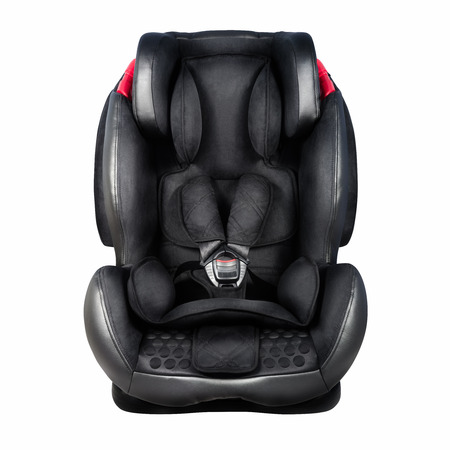

Car Seat Safety: Rear-Face until Age 2
In the April 2011 issue of Pediatrics, the American Academy of Pediatrics (AAP) changed their advice on toddler car seat safety. As of the release of the article, the academy advises parents to keep toddlers in rear-facing car seats until age two, or until they exceed the height or weight limit for the car seat, which can be found on the back of the seat. Up until that time the AAP had recommended keeping kids rear-facing as long as possible, up to the maximum limit of the car seat, but also cited one year and 20 pounds as the minimum for switching a car seat forward facing. As a result, state laws were implemented with the one- year/20 pound guideline and many parents chose to turn infants front-facing at that time. As of 2016, most states have not updated their car seat safety laws to reflect this recommendation but many parents have chosen to invest in convertible car seats that allow the toddler to rear face until they are at least age two.
Read More

The Danger of Winter Coats: Car Seat Safety
According to the National Highway Traffic Safety Administration, more than 46 percent of children ride in car seats that are incorrectly installed in such ways that crash protection is reduced. One of the most common forms of poor car seat installation and use is loose harness straps.
In Bellingham winters, most days are cold enough to warrant the use of a warm jacket and it is only reasonable that parents would want to bundle their kids up. Many parents then loosen car seat straps to fit around the bulk of the winter coat. Unfortunately, the space created between the coat and your child’s frame is a dangerous risk for your children. If a car accident occurs at about 30 miles per hour or higher, the coat may compress but the straps will stay in place thereby leaving a gap that could cause the child to be tossed around or even ejected from the seat.
Read More

When should I Replace Car Seats after a Car Accident?!
Car accidents happen every day and often there is a child in the vehicle strapped into a car seat or booster. Even if your car seat appears intact after an accident, the force of the collision can cause unseen damage and may keep the car seat from properly protecting the child in future car accidents. There are no state or federal laws in place saying that car seats must be replaced after a car accident so parents must use their discretion. Your car seat manufacturer should have instructions in the user manual about what to do after a car accident. The American Academy of Pediatrics recommends replacing car seats that have been in a moderate or severe car crash. According to the National Highway Transportation Administration (NHTSA), a minor car crash may not cause enough damage to warrant a car seat replacement.
If you can say “yes” to all five of these questions, the NHTSA says it’s okay to keep using your car seat but if you are unsure, call the car seat manufacturer.
- Could you drive the car away from the accident?
- Was the door nearest the car seat undamaged?
- Were all occupants of the vehicle uninjured?
- Did the air bags remain un-deployed?
- Is there no visible damage to the car seat?
The NHTSA changed its policy on replacing seats after minor accidents because scientific studies were revealing that car seats continue to meet federal standards for performance and they wanted to ease the financial burden of replacing a seat that may be perfectly good. There was also some concern that some parents would toss the seat but then put the child in the car without a safety seat before they were ready.
Note that it is not a good idea to purchase a used car seat unless it is from a trusted friend or family member; it is impossible to know whether a seat has been in a car accident.
Car Accident Statistics
- In 2004, 495 children under the age of 5 were killed in car accidents. Among these fatalities, approximately 173 (35 percent) of these children were totally unrestrained.
- An estimated 451 children’s lives were saved in 2004 because they were strapped into a child restraint system.
- Child safety seats can reduce fatal injury by 71 percent for infants and 54 percent for toddlers, ages 1 to 4.
Car Seat Installation Safety Tips
- Ensure that you purchase the right car seat for your child’s weight and height.
- Ensure that the seat is properly installed-have it checked by a car seat officer.
- Never place an infant car seat next to an airbag.
- Always use the chair’s five-point harness system and ensure that the cross snap goes across the upper chest.
- Never use a broken or defective car seat.
Note: If you decide that a car seat should be replaced, you may be able to get your insurance company to cover the cost. You may need to send them a photocopy of the car seat instruction booklet that shows the recommendation to replace the seat after a car accident.
If you or a loved one were injured in an accident, you have enough to deal with. Let an experienced accident attorney fight for the full compensation that you deserve. It is not uncommon to receive a settlement from the insurance company that is two to three times bigger with the help of a lawyer. Call the caring accident attorneys at Tario & Associates, P.S. today for a FREE consultation! You will pay nothing up front and no attorney fees at all unless we recover damages for you!
Read More